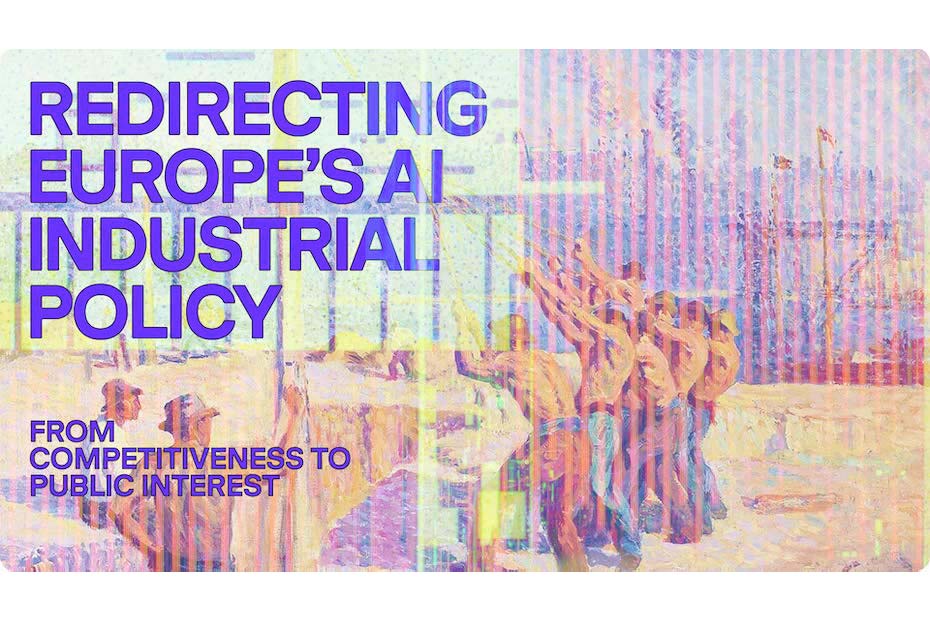by Denis F. Doyon, Samadhi Web Design
Green webhosting
Large data centers also lease space to hosting providers, companies like GoDaddy, BlueHost and HostGator that provide server space and support for both large and small websites. Of the top 20 webhosts globally (Global Web Hosting Market Share October 2019), only two — 1&1 Ionos and Hetzner Online AG, both based in Europe — use 100% renewable energy (The Green Web Foundation, Directory, n.d.).
The Green Web Foundation’s mission is to expand that number by increasing transparency. Media educators and students who maintain personal or professional websites can enter their URL into the Green Web Foundation’s Green Web Check tool and find out if the webhost uses 100% renewable energy (The Green Web Foundation, Is your website hosted green?, n.d.) If not, website owners are encouraged to share the results on social media to nudge the hosting provider to clean up its act.
I have used the Green Web Foundation’s directory to find green webhosts for my clients’ sites, and my own. But what exactly is a “green webhost”? A recent experience provides an illustration.
When a recent client specified green hosting for a new website I was developing for him, I recommended DreamHost. I had opened my own DreamHost account several years ago, impressed by the company’s commitment to reducing their environmental impact. A page on DreamHost’s website described their green initiatives, including LEED Platinum facilities, data centers that partnered with clean wind programs, and purchases of carbon credits to offset 100% of the company’s electricity use. Because DreamHost was listed in the Green Web Foundation’s directory, I could display a “green hosted” badge on my client’s new website.
So I was surprised when a few months after launching my client’s site I found that the badge, complete with a green smiley-face, had been replaced by a grey sad-face badge signifying “not hosted green”. What had happened? The Green Web Foundation told me that they no longer considered DreamHost a green webhost because they no longer purchased green energy. But when I visited DreamHost’s “We Are Green” page again I found the same eco-friendly language: “We’re making a conscious effort to reduce our impact on the environment, with optimized facilities and policies that put respect for natural resources at the core of what we do.” (“Green Hosting from DreamHost”, n.d.)
I put on my media literacy thinking cap and looked closer. I noticed that the commitment to purchase carbon credits was gone, replaced by a statement that DreamHost’s data centers are “powered by grids that obtain electricity from many renewable sources.” This sounds good, but most major electrical grids in the United States obtain at least some energy from renewable sources, so practically any data center in the US can use this claim.
I contacted DreamHost and learned that the company now leases space from Amazon Web Services (AWS), the world’s largest cloud computing company. This is a good example of the widespread migration from in-house data centers to hyperscale centers. Greenpeace has charged AWS with having a deceptive posture on renewables. For example, it says that while Amazon Web Services is committed to using 100% renewable energy, it has greatly expanded its data center in Northern Virginia even though the local electric utility has not been able to provide any additional renewable energy (Hill, 2019). I confirmed that the data center in this dispute is used by DreamHost, so perhaps my client’s site is hosted there.
“We stopped purchasing carbon credits,” the DreamHost representative explained to me, “when we realized that we could do a lot to be a more environmentally-friendly organization without necessarily being carbon-neutral.” That sounded like PR-speak to me. True, using power-efficient processors and installing recycling bins in every office, as DreamHost reports, will help a company be more environmentally friendly, but if the company is not carbon-neutral and isn’t powered by renewable energy, can it really claim to be a “green host”?
This is an excellent example of how media literacy skills can be integrated into coursework on new technologies. Whether students are investigating the economic, social and cultural impacts of new technology, or learning how to use digital technology tools in hands-on skills-based courses, they can be encouraged to look more closely at the environmental impact of digital technology and the sustainability claims of providers.
Sustainable web design
Using a webhost powered by 100% renewable energy is one important factor in website sustainability, but it’s not the only one. An emerging concept is sustainable web design. The idea is that good design can reduce the amount of data traveling between the user and the webhost, and thus reduce carbon emissions throughout the system, from the data center to the office computer or mobile phone.
Today, the average size of a webpage is 3.48MB, which is more than 24 times the size it was in 2003 (Manoverboard Inc., n.d.). As the speed of internet connections has increased, web designers have been able to use more data-intensive content, like full-screen photos and streaming video. But more data served means more electrical energy used, and more carbon emissions generated. Each site may generate only 1 or 2 grams of CO2 every time a user visits, but with 200 million active websites on the internet and the busiest sites getting hundreds of millions of hits per month, the carbon emissions add up.
Beyond choosing a green webhost, specialists have outlined three other strategies for reducing the carbon emissions associated with a website (MightyBytes, Inc., n.d.):
1. Reducing the number of clicks (and thus page loads) for each user. This includes search engine optimization (SEO) so that users find your site quickly, and clear and efficient site navigation, so that users don’t have to wander around your website to find what they’re looking for.
2. Creating lightweight pages (so that fewer bytes are served) by using a mobile-first design approach, resizing and compressing images, and avoiding data hogs like Flash.
3. Improving page loading speed by implementing caching, minifying CSS and Javascript files, using shared code libraries, and other tech tricks.
I already use these techniques in my work to create websites that work well for site visitors and thus for my clients. My clients want sites that rank high in search results (good SEO), and they want site pages to load quickly and work perfectly on mobile phones. Only recently have I learned that these elements of good web design can also help reduce their site’s carbon footprint.
Educators in skills-based web design courses can easily integrate these concepts into student assignments. Students can build sample websites, and then measure the carbon emissions they generate using online tools at websitecarbon.com or ecograder.com. As students learn more advanced techniques (caching, compressing images, etc.) they can use the same tools to measure their carbon savings. The goal could be to design a website with no more than 0.5 grams of CO2 per page view.
Designing a greener future
My research uncovered some sobering facts — like the explosive growth of Big Data, and the amount of CO2 emitted when I watch a movie on Netflix. But it also gave me encouragement. I learned how I could make a difference in my own work, by recommending truly green webhosts for my clients, following sustainable website design practices, and supporting and publicizing grassroots projects to reduce the internet’s carbon footprint. Educators can use the same ideas to encourage students to investigate the environmental impact of new media technology while they learn technological skills.
The climate crisis makes this imperative. In every human endeavor – including the creation of media products — we must examine the environmental consequences of our actions and take small but important steps toward a more sustainable future.
This article was first published in The Journal of Sustainability Education, 29 April 2020.
Online resources mentioned in this article:
http://clickclean.org – Greenpeace campaign calling on major internet companies to power their data centers on renewable energy. Includes a tool displaying whether popular online services are powered by renewable energy.
https://ecograder.com – Tool to assess individual websites on sustainable website design.
https://serving.green – A manifesto for sustainable web design.
https://sustainablewebdesign.com – Resources for sustainable web design.
https://thegreenwebfoundation.org – Includes a Green Web Check tool revealing whether an individual website is hosted on a server using 100% renewable energy, and a global directory of green webhosts.
https://websitecarbon.com – Tool estimating the carbon footprint of individual websites.
References
Andrae, A. S. G., & Edler, T. (2015, April 30). On Global Electricity Usage of Communication Technology: Trends to 2030. Retrieved from https://www.mdpi.com/2078-1547/6/1/117.
Belkhir, L. (2019, June 18). How smartphones are heating up the planet. Retrieved from http://theconversation.com/how-smartphones-are-heating-up-the-planet-92793.
Global data center storage capacity 2016-2021. (n.d.). Retrieved from https://www.statista.com/statistics/638593/worldwide-data-center-storage-capacity-cloud-vs-traditional/.
Global Web Hosting Market Share October 2019. (n.d.). Retrieved October 30, 2019, from https://hostadvice.com/marketshare/.
Green Chemistry vs Toxic Technology: The Problem With Electronics. (n.d.). Retrieved from http://www.electronicstakeback.com/toxics-in-electronics/
Green Hosting from DreamHost. (n.d.). Retrieved from https://www.dreamhost.com/company/we-are-green/
Greenpeace (2017). Clicking clean: Who is winning the race to build a green internet? Retrieved from http://www.clickclean.org.
Hill, J. S. (2019, February 15). Greenpeace & Amazon Trade Blows Over 100% Renewable Energy Claims. CleanTechnica. Retrieved from https://cleantechnica.com.
Jones, N. (2018, September 12). How to stop data centres from gobbling up the world’s electricity. Retrieved October 26, 2019, from https://www.nature.com/articles/d41586-018-06610-y.
Manoverboard Inc. (n.d.). #ServingGreen. Retrieved from https://serving.green.
MightyBytes, Inc. (n.d.). Sustainable Web Design: Resources for building a cleaner, greener internet. Retrieved from https://sustainablewebdesign.org/.
Muntean, M., Guizzardi, D., Schaaf, E., Crippa, M., Solazzo, E., Olivier, J., & Vignatti, E. (2018). Fossil CO2 emissions of all world countries – 2018 Report. Publications Office of the European Union.
The Green Web Foundation (n.d.). Directory. Retrieved October 27, 2019, from https://staging.thegreenwebfoundation.org/directory/.
__ (n.d.) Is your website hosted green? Retrieved October 20, 2019, from https://staging.thegreenwebfoundation.org.



